The Graduate Nursing Project collection includes Doctor of Nursing Practice (DNP) Scholarly Projects and Master's students' non-thesis projects submitted as part of program requirements.
TO
Filters: Type: "Text" Collection: ehsl_gradnu
| Title | Creator | Date | Description | ||
|---|---|---|---|---|---|
| 51 |
 |
Provider Perceptions of the Tele Critical Care Patient Transfer Process | ZoBell, David, Ward, DEnise, Lee, Vivian | 2020 | POSTER |
| 52 |
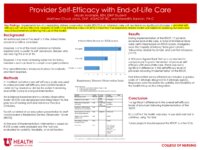 |
Provider Self-Efficacy with End-of-Life Care | Andrade, Micah; Jarvis, Matthew Chuck; Bannon, Meredith | 2021 | POSTER |
| 53 |
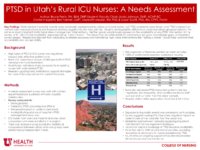 |
PTSD in Utah's Rural ICU Nurses: A Needs Assessment | Ferrin, Bruce | 2018 | POSTER |
| 54 |
 |
Readiness Assessment for Extubation Planning: A QI Initiative | Johnny, Jace D. | 2019 | POSTER |
| 55 |
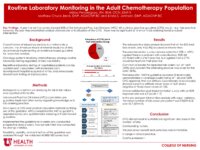 |
Routine Laboratory Monitoring in the Adult Chemotherapy Population | Pendergrass, Mikka; Jarvis, Matthew Chuck; Johnson, Linda S. | 2021 | POSTER |
| 56 |
 |
Sepsis Bundle Compliance in the Emergency Department | Wilson, Teya; Johnson, Linda | 2021 | POSTER |
| 57 |
 |
Sepsis in the Emergency Department | Singer, Jessica | 2018 | POSTER |
| 58 |
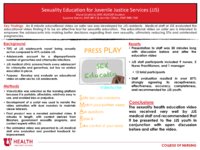 |
Sexuality Education for Juvenile Justice Services (JJS) | Stratford, Shane | 2018 | Poster |
| 59 |
 |
Simulation Based Assessment for a Didactic Curriculum in Intubated Pediatric Burn Patients | Daniels, Emily; Johnson, Linda; Gauthier, Kristy; Lewis, Giavonni | 2021 | POSTER |
| 60 |
 |
Timely and Safe Removal of Backboards in a Rural Emergency Department | Garrett, Craig | 2018 | POSTER |
| 61 |
 |
Timely Cervical Collar Removal at a Level 1 Trauma Center | Teas, Molly | 2018 | POSTER |
| 62 |
 |
To Test or Not to Test... Know Your Diff | Caballero, Klasina | 2017 | POSTER |
| 63 |
 |
Utah and the APRN Interstate Licensing Compact | Smith, Kenneth R. | 2019 | POSTER |
| 64 |
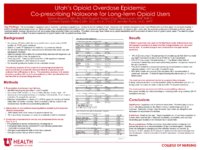 |
Utah's Opioid Overdose Epidemic: Co-prescribing Naloxone for Long-term Opioid Users | Brearton, Klinton L. | 2018 | POSTER |
| 65 |
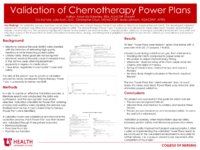 |
Validation of Chemotherapy Power Plans | Eckersley, Amanda | 2019 | POSTER |
| 66 |
 |
Assessing Refugee Utilization of Healthcare Systems | Kueneman, Erica | 2020 | Background: The state of Utah does not systematically evaluate refugee healthcare programs and utilization. Two organizations in the Greater Salt Lake City Valley, Utah provide critical healthcare education and healthcare access to refugees. These two institutions do not have the means to assess the... |
| 67 |
 |
Assessment of Early, Standardized Palliative Care Referrals in Patients with Metastatic Gastrointestinal Cancer: A Quality Improvement Initiative | Bayer, Valkyria R.; Gee, Julia P. | 2022 | Background: Patients with advanced cancer often present with high symptom burden and decreased quality of life. Metastatic gastrointestinal cancers can be especially debilitating with 5-year relative survival rates ranging from 2%-15%. Early involvement of palliative care has shown to improve sympto... |
| 68 |
 |
Development and Implementation of an Early Mobility Guideline for Traumatic Brain Injury Patients in a Shock Trauma Intensive Care Unit | Park, Marleen D.; Majercik, Sarah D.; Christensen, Scott S. | 2022 | Background: Traumatic brain injury (TBI) patients often remain bedbound for prolonged periods in intensive care units (ICU) due to a lack of resources and collaboration between interdisciplinary teams, in addition to poorly specified guidelines for patient mobilization. Early mobility programs have ... |
| 69 |
 |
Development of a Toolkit for Ordering Timely Diagnostic Testing and Treatments in the Emergency Department Triage | Truong, Alex | 2023 | POSTER |
| 70 |
 |
Development of a Toolkit for Ordering Timely Diagnostic Testing and Treatments in the Emergency Department Triage | Truong, Alex C. | 2023 | Background: The COVID-19 pandemic has led to many turnovers of nursing staff at the emergency departments (ED). This has led to various new staff with different experiences joining the ED team and placing new staff members in the triage role. Many new ED nurses need to familiarize themselves with th... |
| 71 |
 |
Development of Multiple Trauma Activation Training for Surgical Services | Rachael, Hubertz; Guo, Jia-Wen | 2023 | Background: Mass casualty incidents (MCIs) create a large influx of patients, are becoming more prevalent, and require adequate training for healthcare personnel. Multiple Trauma Activation (MTA)- specific protocols promote awareness and effective responses and increase access to healthcare. Intermo... |
| 72 |
 |
Enacting Evidence-Based Incontinence Care in the Inpatient Rehabilitation Setting | Van Meter, Kasindra M.; Alderden, Jenny G.; Brady, Lexi M. | 2022 | Background: The majority of patients with incontinence after suffering a stroke or brain injury are not optimally managed in the inpatient setting. An incontinence order set with a Timed Toileting option is in use in the Stroke and Brain Injury unit. However, given the average patient's robust rehab... |
| 73 |
 |
Exploring Barriers to the Utilization of Continuous Glucose Monitors in a Weight Management Clinic: A Needs Assessment | Shepherd, Caden | 2023 | Background: Approximately 122 million Americans have diabetes or prediabetes. In 2018, 8.7% of adults 18 or older were diagnosed with diabetes in Utah. Continuous glucose monitoring (CGM) devices are used for managing diabetes. Local Problem: There are barriers to prescribing CGM devices in a local ... |
| 74 |
 |
Fostering Professional Fulfillment in Emergency Department Nurses | Speak, Alice | 2023 | Background: Professional fulfillment, defined as a culture of wellness, efficiency of practice, and personal resilience, is essential for safe practice and nurse well-being. Lack of professional fulfillment is associated with burnout, increased risk for medical errors, and even self-harm and suicide... |
| 75 |
 |
Implementation of Palliative Care Tools in Adult Oncology | Iheanacho, Chidiebere N. | 2023 | Background: Palliative care is a multidisciplinary specialty that provides patients and families with physical, psychosocial, and spiritual care facing serious illnesses. However, most patients who are seriously ill do not receive a palliative care intervention early in their disease trajectory. Man... |
